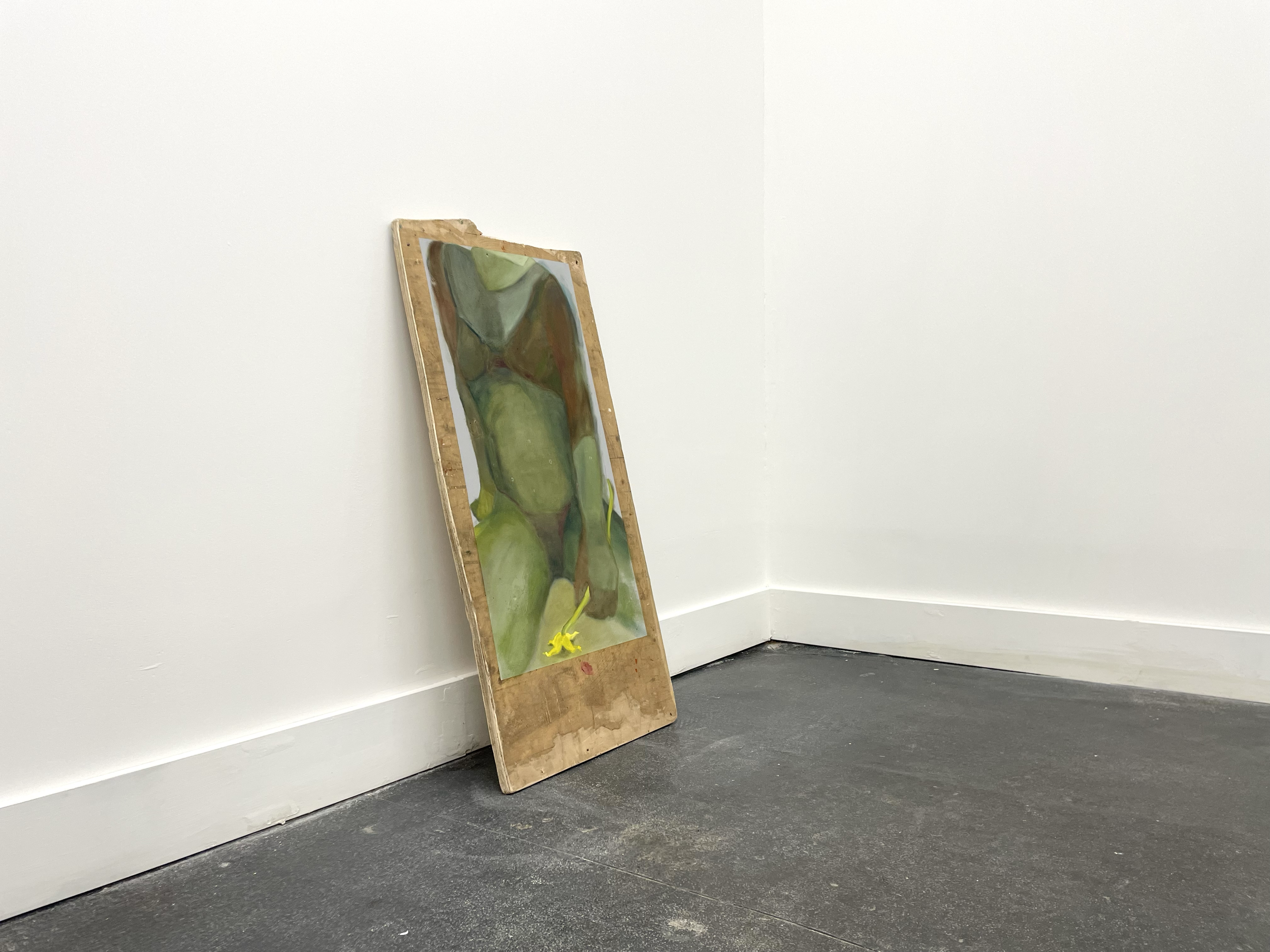
Pipeline
Enchanted Alchemies
07.Nov.24 - 21.Dec.24
Give Me an Inch showcases the work of six artists on the subject of entry points. Each artist presents a deliberate offering, permitting the viewer to decode their work via a key left out for them. These openings range from a knowledge of materials, found objects charged with history, framing devices and suggestions of narrative. The exhibition looks into the power dynamics between the artist and their audience, the teller and the tale, and how only a hint is needed to delve into the deeper context of a practice.
An arrangement of objects, prints, and hand-worked materials are found within the borders of JD Rooney’s work. Much of his exploration looks towards a discovery of residual material either salvaged or washed up between West Africa, the Caribbean, and Britain. The objects in his work are loaded with information to pass through time. Perhaps they may be encountered as fragments of secretive technologies, only to be understood by those with a shared relationship or history.
Rachel Clancy plants unexpected objects into mundane scenes, charging her paintings with tension. Her compositions often depict cropped representations of domestic spaces, hinting at the presence of human intervention. Clancy is interested in how the process of layering and abstraction mimics a magic trick, hiding and revealing clues within the paintings. In pointing to the narrative beyond the frame, Clancy captures past interactions between people and space.
Gabriel Kidd considers the relationship between insertion and extraction. Gathering ephemera from countless walks on the moors, Kidd’s work serves as a portrait of collecting. Interested in the formation of queer identity, their work is dotted with pockets containing precious items. Pockets are private, portable yet precarious entry points. They are a way to take pieces of ourselves around with us yet are also prone to invasion.
Grace Kalyta unpacks the social coding and hierarchies embedded in material and surface. Interested in thresholds and what exists under the surface, Kalyta upholsters and embellishes her canvases with pre-used materials such as leather and gem-stones. Similarly to the way we use clothing as a form of seduction, these appendages serve as points of access for the viewer and a tangible gateway for what lies beneath.
Lexia Hachtmann uses ambiguity to shape the viewer's relationship with her work, providing just enough context to guide the scene. Grounding her paintings in a shared reality through symbols such as flowers, Hachtmann reflects on the passing of time and offers the viewer a glimpse of a wider narrative.
Embedded within hand carved wooden frames, Em Kettner’s figurative drawings portray disabled bodies in a range of playful and empowering positions. Kettner controls the physical accessibility of her work, positioning her drawings at the eye level of those seated or in a wheelchair, whilst requiring others to crouch for a closer look. Like peep-holes, the carved frames serve as both a barrier and entry point.
Info + opening times
Pipeline







